巻号一覧
27 巻, 4 号
選択された号の論文の2件中1~2を表示しています
- |<
- <
- 1
- >
- >|
-
青山 英康, 大平 昌彦, 吉岡 信一, 太田 武夫, 吉田 健男, 大原 啓志, 和気 健三, 五島 正規, 柳楽 翼, 小野 昭雄, 藤 ...1972 年27 巻4 号 p. 357-363
発行日: 1972/10/28
公開日: 2009/02/17
ジャーナル フリーThe authors have already reported the results of epidemiological studies of SMON in the town of Yubara, Japan.
The Committee on SMON demonstrated that ingestions of chinoform played an important role in development of clinical symptomes in SMON patients as a result of much epidemiological evidence before and after ceasing production and sale of all drugs containing chinoform.
The authors have continued the investigation for the purpose of elucidating unsettled questions concerned the above conclusion.
Results are as follows;
1) No relationship was found between incidences of diseases such as gastritis, gastro-duodenal diseases, diarrhoea and neuropathy, and that of SMON among persons covered by National Health Insurance.
2) Yubara Hospital is the only hospital in the town of Yubara and all the SMON patients were given a clinical diagnosis as well as therapy at this hospital. The amount of chinoform purchased in the hospital paralelled the incidence of SMON and number of patients at the hospital.
3) Two episodes resulted in expansion of the amount of ingested chinoform. One was a change in the advertising method of the drug companies after 1955 which stated possibilities of a wider use of the drug, especially for general gastro-intestinal disorders and the other was a change in government policy after 1960 concerning control over the use of antibiotics.
4) The physical, mental and social disturbances of many SMON patients still present difficult situations.抄録全体を表示PDF形式でダウンロード (1065K) -
山下 節義, 土居 真, 西尾 雅七, 北條 博厚, 田中 昌人1972 年27 巻4 号 p. 364-399
発行日: 1972/10/28
公開日: 2009/02/17
ジャーナル フリーIn the summer of 1955, 12, 131 children in western Japan were poisoned as a result of the consumpting “Morinaga Dry Milk” (according to 1956 survey conducted by the Welfare Ministry). 130 of children actually died as a result of this poisoning. The arsenic contained in the milk resulted from the poorly purified “Secondary Sodium Phosphate” used as a stabilizer in the manufacturing process of powdered milk.
The afflicted infants were those for whom the powdered milk served as a main food and who were physically and mentally in the developing process. Such mass-poisoning had heretofore never been reported in the world.
As the symptoms of poisoning disappeared, these children were thought to have been cured. The issue was closed medically and administrationally in 1956 as the conclusion had been reached that there would be no longlasting effects.
In 1969, Dr. Maruyama et al. (J.J.P.H. Vol. 16, No. 3, p. 170, 1969) reported continuing effects of this arsenic poisoning, once more reviving the medical and social problem. From that time, surveys of these patients were carried out in several places in western Japan.
In Kyoto, from December 1970 to July 1971, inclusive checks were done as follows: Epidemiological Survey (415 Subjects), Clinical Survey (291 Subjects) and Clinical Psychological Survey (261 Subjects).
The Kyoto victims presented the following:
1. In Kyoto, many victims had a much higher rate of physical and mental complaints than the control group.
2. Average height was less than that of the same age group.
3. Rate of victims who showed proteinuria (male 14%, female 12%) was higher than that of the same age group.
4. Abnormal and borderline brain waves were found to be much higher rate in victims (abnormal 14%, borderline 17%) than average.
5. The younger the age of milk consumption, the higher were the rates of abnormal brain waves.
6. Central nervous system disorders eq. epilepsy, minimal brain damage syndrome, mental retardation etc. were found to be higher rate than average.
7. Numbers of the patients with hardness of hearing (18%) were above average.
8. Numbers of the patients with anomaly of refraction (48%) were above average.
9. Many victims (64%) had symptoms of skin that characterized pigmentation and depigmentation rashes etc..
10. Tooth enamel dysplasia was found in higher rates among victims.
11. Numbers of victims (21%) with an IQ of less than 85 exceeded average numbers, according to Educational Ministry Statistics.
12. In psychological tests, eq. Uchida-Kraepelin methods, atypical group in victims was found to be higher rate than average.
13. Many had irregular and painful menstruation.
14. Many complaints of victims continued from infancy.
15. The result of this follow-up study is not inconsistent with the result of pathological and clinical report in 1955.
16. Clinical findings and diagnostic reports of this survey are just the same as those in Osaka and Okayama etc.
As mentioned above, it can be concluded that the physical and mental defects of these victims are the result of consumption of arsenic tainted “Morinaga Dry Milk” and that these persons have received no therapy for 16 years.
These victims are now in physical and mental adolescent changes. As they have had no follow-up medical care, a prediction of their health in adult hood is impossible.
For these reasons, a continuation of the surveys is most necessary, and, counterplans-social care, health consultations, psychological counselling including educational problems etc.-should be carried out by medical and psychological specialists.抄録全体を表示PDF形式でダウンロード (5782K)
- |<
- <
- 1
- >
- >|
